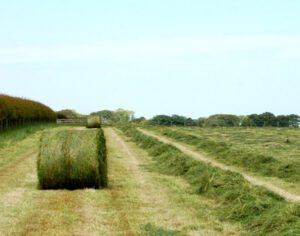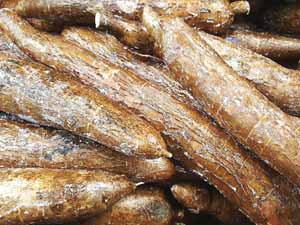Commercial bamboo cultivation or bamboo farming is a very old and popular business in many countries around the world. It is a very large industry worth over 72 billion dollars globally in the year of 2019.
Actually, bamboo farming is a cultivation and raw material industry that provides the raw materials for the broader bamboo industry. It is a very old and popular source of earning in many countries.
Bamboo cultivation in South, South East Asia and East Asia stretches back thousands of years. One practice, in South Korea, has been designated as a Globally Important Agricultural Heritage Systems.
Bamboo was historically a dominant raw material in South and South East Asia. But the global bamboo industry has significantly grown in recent decades, mainly because of the high sustainability of bamboo as compared to other biomass cultivation strategies (such as traditional timber forestry).
For example, as of 2016, the U.S. Fiber corporation Resource Fiber is contracting farmers in the United States for bamboo cultivation. Or in 2009, United Nations Industrial Development Organization published guidelines for cultivation of bamboo in semi-arid climates in Ethiopia and Kenya.[1]
Bamboo plants are very strong and hardy and they can grow on marginal land, and they can be profitably cultivated in many degraded lands. Bamboo plants also grow very rapidly and it is an effective climate change mitigation and carbon sequestration crop, absorbing between 100 and 400 tonnes of carbon per hectare.
An international intergovernmental organization was established to promote the development of bamboo cultivation, the International Bamboo and Rattan Organisation in the year of 1997.
Actually, bamboos are a diverse group of evergreen perennial flowering plants in the subfamily Bambusoideae of the grass family Poaceae. Giant bamboos are the largest members of the grass family.
However, bamboos are of notable economic and cultural significance in South Asia, Southeast Asia, and East Asia. And they are mostly used for building materials, as a food source and as a versatile raw product.
Bamboo, like wood, is a natural composite material with a high strength-to-weight ratio useful for structures. And bamboo’s strength-to-weight ratio is similar to timber, and its strength is generally similar to a strong softwood or hardwood timber.
However, bamboos have numerous uses, and they are highly priced. So, commercial bamboo farming can be a very good and profitable business for you if you can do everything perfectly.
Uses of Bamboo
Bamboo is used for many different purposes. Here we are trying to list some uses of bamboo.
- Fencing
- Construction purpose
- Biomass production
- Support material in agriculture
- Pulp and paper
- Making musical instruments
- Panels and particle boards
- Making furniture
- Handicrafts
- Textiles
- As a writing surface
- The shoots are edible
- And many more uses……..
Advantages of Bamboo Farming Business
Commercial bamboo farming is a very old and lucrative business. It’s also very easy and popular. Even the beginners can start this business easily.
However, here we are trying to describe the top advantages of commercial bamboo farming business.
- Commercial bamboo farming is a very old and popular business in many countries around the world.
- Commercial production of bamboo is not a new business idea. Many people are already doing this business.
- Starting commercial bamboo farming business is very easy and simple. Even the beginners can also start this business with very little experience.
- Bamboo plants grow much faster than many other plants. And it’s very easy to make good profits from this business.
- Commercial bamboo farming is already an established business. So, you don’t have to worry much about starting and operating this business.
- Bamboo plants are very strong and hardy and growing them is very easy. The plants generally require less caring and other management.
- Capital requirement in commercial bamboo farming business is relatively less. But the returns are high.
- Both demand and value of bamboo in the market are very high. So, you will be able to make good profits from this business.
- Bamboo and bamboo products have high demands and marketing is very easy and simple. You can easily sell your products in any of your local/nearest market.
- As commercial bamboo farming is a profitable business, so it can be a good employment source for the people, especially for the educated but unemployed people.
How to Start Bamboo Farming Business?
Starting commercial bamboo farming business is relatively easy and simple if you follow the step by by guide for bamboo production. It’s very easy and the beginners can also start this business.

However, here we are trying to describe more about starting and operating a successful bamboo farming business from planting, caring to harvesting and marketing.
Step 1. Site Selection
Bamboo plants grow well in almost everywhere around the world. But it will be better if you can chose a site with sandy loam and loamy clay soils.
And the selected site must have to be well drained. The soil with slightly acidic nature or with pH between 4.5 and 6 is considered very good for bamboo farming.
Step 2. Land Preparation
Like many other crop farming business, you have to prepare the land perfectly. Clean bushes, grasses and other unwanted materials or plants from the site. Ploughing and adding organic fertilizers is also very important.
Step 3. Climate Requirement
The best climates for bamboo farming are the warm temperate and tropical climates. It is believed that under such conditions, bamboo plant grows 3 inches a day.
Rainfall is very important for commercial bamboo farming business. And average rainfall less than 1200 mm a year is not good for bamboo cultivation.
Humidity of the area should be between 75% and 85% and the wind velocity above 80 km per hour can cause serious problems, especially during development stage.
Step 4. Varieties/Cultivars
There are numerous varieties of bamboo available throughout the world. And some of these varieties are good for commercial production.
You should choose those varieties which grow well in your area. You can consult with the local farmers in your area for having better recommendations.
Step 5. Propagation
Propagation of bamboo is done by many different methods. And the planting material for bamboo may come in the form of seeds, wildings, offsets, cuttings, air-layering and tissue cultured plantlets.
And all these planting materials have to be raised for a certain period in a nursery before transplanting them into the main field.
Propagation by seeds for large plantations is a rarely used method because seeds are produced when bamboo plants flower and the interval may range from 40 to 80 years. And propagation by seeds produces seedlings after 8-12 months, but needs good water and nutrient supply.
Wildings can be obtained from young bamboo clusters by scooping them with a spade. Many seedlings can be raised in this method, but it is observed that the establishment of the plant would be poor owing to the disturbance in the root system while uprooting.
And vegetative propagation or propagation through rhizomes is the best possible way for large plantations and this system is most common and traditionally used.
Step 6. Purchase Planting Materials
You can purchase the planting materials from any of your nearest nurseries. You can also collect from your relatives or any existing farmers in your area.
Step 7. Planting
After cleaning and ploughing the land, you have to choose a proper layout and dig pits for planting. The size of the pit depends on the type of planting material being used.
Generally the pits are made large and deep so that the newly planted bamboo gets established easily. The dimensions of the pit can be 60 x 60 cm in heavy rainfall areas. But where the rainfall is scanty, the pit size can be up to 1 m.
The spacing between the seedlings should be 5 x 4 m, so that 1 acre of land can approximately accommodate 200 plants. Place the offset 10-20 cm below the ground and cover with soil. And press the soil slightly around the seedling.
Planting Season
Bamboo plants can be planted any time of the year (except winter with heavy frost). But rainy season and rainy days are very good for planting bamboo plants.
Step 8. Caring
Bamboo plants are very strong and hardy and they grow rapidly. They generally require less caring and other management. Although, taking additional caring will help them to grow well.
Fertilizing
Proper application of fertilizer play a very important role in commercial bamboo farming. Fertilizers play major role for high yield and best quality bamboo, especially when the seedlings are transplanted from nursery to main field.
Bamboo plants are heavy feeders, so even rich soils would become depleted after couple of years if fertilizers are not applied. Consult with an expert in your area for better recommendation.
Watering/Irrigation
Frequent watering or irrigation should be carried while the bamboo plants are grown on nursery beds. And give irrigation immediately after transplanting the seedlings from nursery to main field.
Subsequent irrigation depend on the soil moisture holding and climatic conditions. It’s preferred to let a plant go a little dry and water it again. You can adopt drip irrigation for better utilization of water.
Mulching
Mulching is very important for commercial bamboo farming. Mulching helps to prevent the growth of weeds and also retain moisture into the soil. Use organic materials for using as mulch (such as straw or hay).
Weeding
Weeds consume nutrients from the soil and the main crop suffer. So control weeds regularly. Although, mulching will prevent most of the weeds.
Hand weeding and hoeing will be helpful for controlling weeds. As sun light causes for more weed growth, so providing shade on the ground and lowering the temperatures can check out the weeds.
Inter Cropping
You can utilize the space between bamboo plants by inter cropping. Ginger, chillies and turmeric are excellent choice for inter cropping.
Step 9. Control Pests and Diseases
Like many other commercial crops, bamboo plants are also susceptible to some common pests and diseases. Common pests that attract the bamboo plants are Aphids, Beetles, Mealybugs, Scales and Termites. You can use both organic and chemical pesticides for preventing these pests.
Bamboo blight, branch die-back, foliage blight, little leaf, leaf rust, leaf rust, rhizome and root rot, thread blight and witche’s broom are common diseases of the bamboo plants.
You can prevent most of the disease if you monitor the plants regularly. Most of the disease can be controlled by the cutting and removal of infected parts of the plant. You can also apply prophylactic fungicides for controlling the spread of diseases.
Step 10. Harvesting
You can start harvesting bamboo by selecting the culms rather than felling the trees. Some species of bamboo regenerate naturally after harvesting.
The crop of bamboo become ready for harvesting in typically 5 years. And you should start harvesting from the center, because new clums are produced outwards and the older clump is left at the center.
While harvesting, keep a few strong clumps on the tree for supporting the new soft culms for a few months (otherwise they would bend).
Yield
It’s very tough to tell the exact amount. It depends on numerous factors. Generally the annual yield of bamboo depends on the species and as well as environment.
An average weight of the culms at 10 kg, then the yield in the first year is about 10 tonnes per acre. And this production will stabilize at about 14.5 tonnes per acre in 9th year after planting.
Step 11. Marketing
Marketing bamboo is very easy and simple. You will probably be able to sell your products in the local market. Although, you should determine your marketing strategies before starting this business.
These are the common ways and steps for starting and operating a successful bamboo farming business. Hope this guide has helped you! Good luck and may God bless you!





